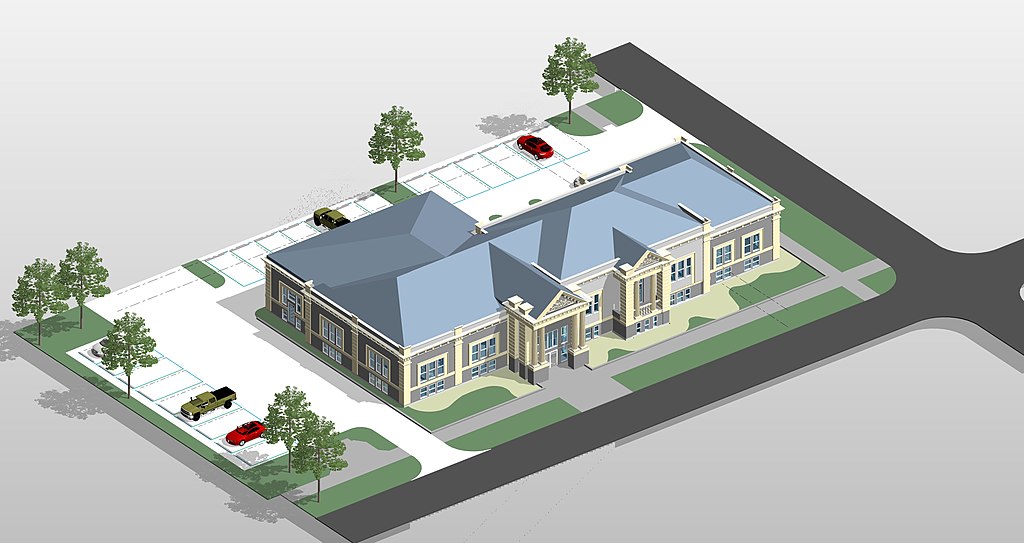{{ article.displayTitle }}
| | {{ 'ml-lesson-number-slides' | message : article.intro.bblockCount }} |
| | {{ 'ml-lesson-number-exercises' | message : article.intro.exerciseCount }} |
| | {{ 'ml-lesson-time-estimation' | message }} |
Catch-Up and Review
Here are a few recommended readings before getting started with this lesson.
Maps and Actual Distances
On a sunny Saturday morning, Kevin — a boy with a passion for formula 1 racing cars — wakes up and finds a letter sitting on the table. It is from his pops.


The Scale of a Map
Most maps include the math of a particular relation between two units of measure. One of the measures refers to distances on the map itself and the other refers to actual distances. This relationship is called a scale. Other real-life tools use this relationship as well.
Scale
The scale of a model or drawing is the ratio between any length on the model or drawing and its corresponding length on the actual object or place.
Suppose a drawing has a scale of 1in : 100ft. This means that 1 inch on the drawing represents 100 feet on the actual object. Apart from the colon notation, a scale can be expressed using an equals sign or as a fraction, as it is a ratio.
| Denoting a Scale | |
|---|---|
| Ratio | 1in:100ft |
| Equals Sign | 1in=100ft |
| Fraction | 100ft1in |
When a scale is written without specifying the units, it is understood that both numbers have the same unit of measure. For example, a scale of 1:2 means that the actual object is twice the size of the model. A scale of 1:0.5 means that the actual object is half the size of the model — whether it be in meters, inches, yards, and so on.

Scale Drawing

Finding a Missing Length

Hint
A map is a scale drawing. Then, the ratio of any length on the drawing to the actual length is always the same. The watch shows the distances traveled, where the first distance indicates the distance between the bakery and the bank.
Solution
Kevin's smartwatch gives the actual distances between the visited places. According to the map, the bakery and the bank are 2.85 inches apart. Let x be the distance between the bank and the aunt's house on the map.
| Place 1 | Place 2 | Distance on the Map (in) | Actual Distance (mi) |
|---|---|---|---|
| Bakery | Bank | 2.85 | 0.75 |
| Bank | Aunt's house | x | 0.70 |
LHS⋅0.70=RHS⋅0.70
Calculate quotient
Multiply
Rearrange equation

Scale for Three Dimensional Objects
If the original real-life situation involves a three-dimensional object, making a scale model is more useful than a drawing. The idea behind a scale model is the same as a scale drawing, but the model has three dimensions instead of two.
Scale Model

Height of a Lighthouse
The lighthouse door is closed and the code to open it is the actual height of the lighthouse, measured in meters. For a moment, Kevin does not know what to do. He realizes that he should open the backpack his aunt gave him. Inside, he finds a scale model of the lighthouse and a tape measure.

Kevin figures it out and manages to measure the width of the base of the lighthouse. Also, he measures the width and height of the scale model with the tape measure.
| Scale Model | Lighthouse | |
|---|---|---|
| Width | 10 cm | 5.25 m |
| Height | 30 cm | ? |
Hint
In a scale model, the ratio of a linear measurement on the model to the corresponding linear measurement on the actual object is always the same.
Solution
Cross multiply
Multiply
LHS/10=RHS/10
Calculate quotient

Length Scale Factor
The length scale factor of a scale drawing or scale model is the ratio of a length on the drawing or model to the corresponding actual length where both lengths have the same units of measure.
Finding Length Scale Factors


Hint
Be sure all the dimensions are written with the same units of measure before finding the length scale factor.
Solution
The length scale factor of the blueprint is the ratio of a dimension on the blueprint to the corresponding actual dimension. The dimensions of the bed on the blueprint are written on its side. Additionally, Kevin measured his actual bed length.
| Blueprint Dimensions (cm) | Actual Dimensions (m) | |
|---|---|---|
| Bed length | 9 | 1.80 |
| Bed width | 5 |

Similarly, the length scale factor of the scale shed can be found. The width and length of the model are known and Kevin measured the actual width of the shed.
| Scale Model Dimensions (cm) | Actual Dimensions (m) | |
|---|---|---|
| Length | 20 | |
| Width | 15 | 4.50 |
Substitute values
ba=b⋅30a⋅30
ba=b⋅20a⋅20
Multiply
Add fractions
ba=b/50a/50
a⋅b1=ba
Calculate quotient
Next Stop

Hint
The ratio of the distance on the tablet to the actual distance is equal to the length scale factor. Use the fact that 36 inches are the same as 1 yard.
Solution
Substitute values
LHS⋅x=RHS⋅x
LHS/0.0004=RHS/0.0004
Calculate quotient
Rearrange equation
Length in a Scale Model
When Kevin arrived at the last destination, his father was there waiting with a huge smile and a box in his hands. Inside, there was a scale formula 1 racing car made with a length scale factor of 161!

Solution
Length Scale factor=161
LHS⋅560=RHS⋅560
b1⋅a=ba
Calculate quotient
Rearrange equation
Relating the Area of a Scale Drawing to the Actual Area

| Area of Original Triangle | Length Scale Factor | Area of Scale Triangle | Ratio of Areas |
|---|---|---|---|
| 2.8 | 2 | 11.2 | 2.811.2=4=22 |
| 2.8 | 0.5=21 | 0.7 | 2.80.7=0.25=41=(21)2 |
| 2.8 | 1.5=23 | 6.3 | 2.86.3=2.25=49=(23)2 |